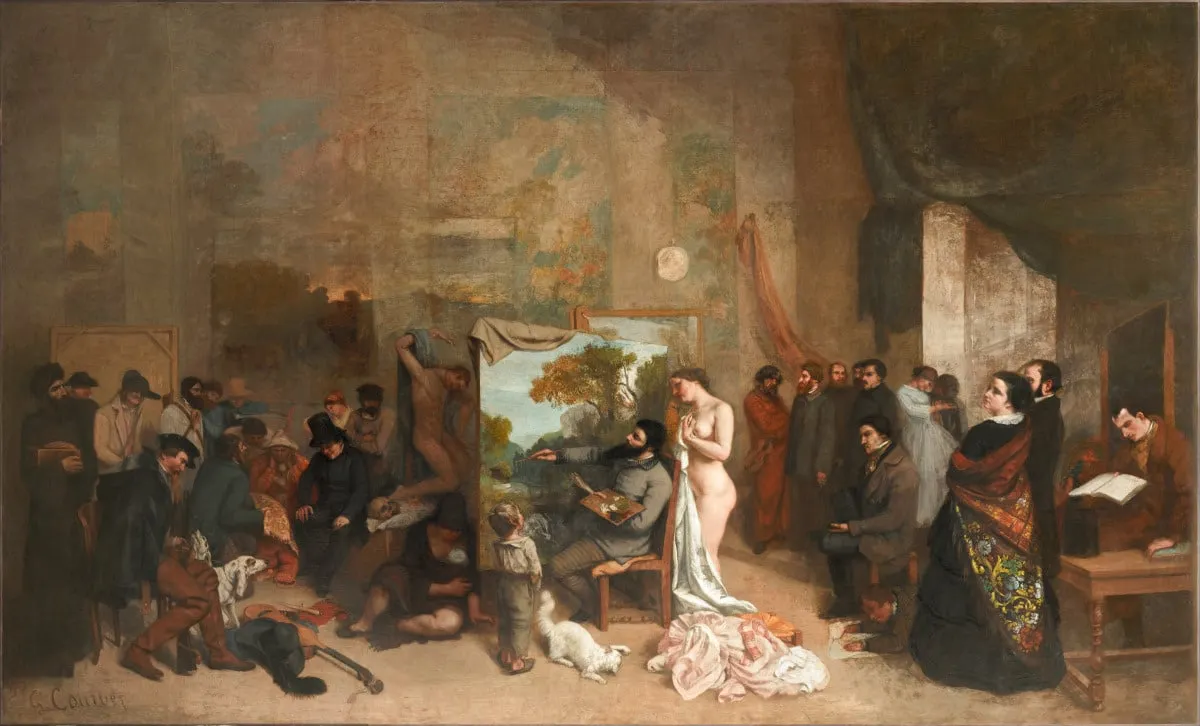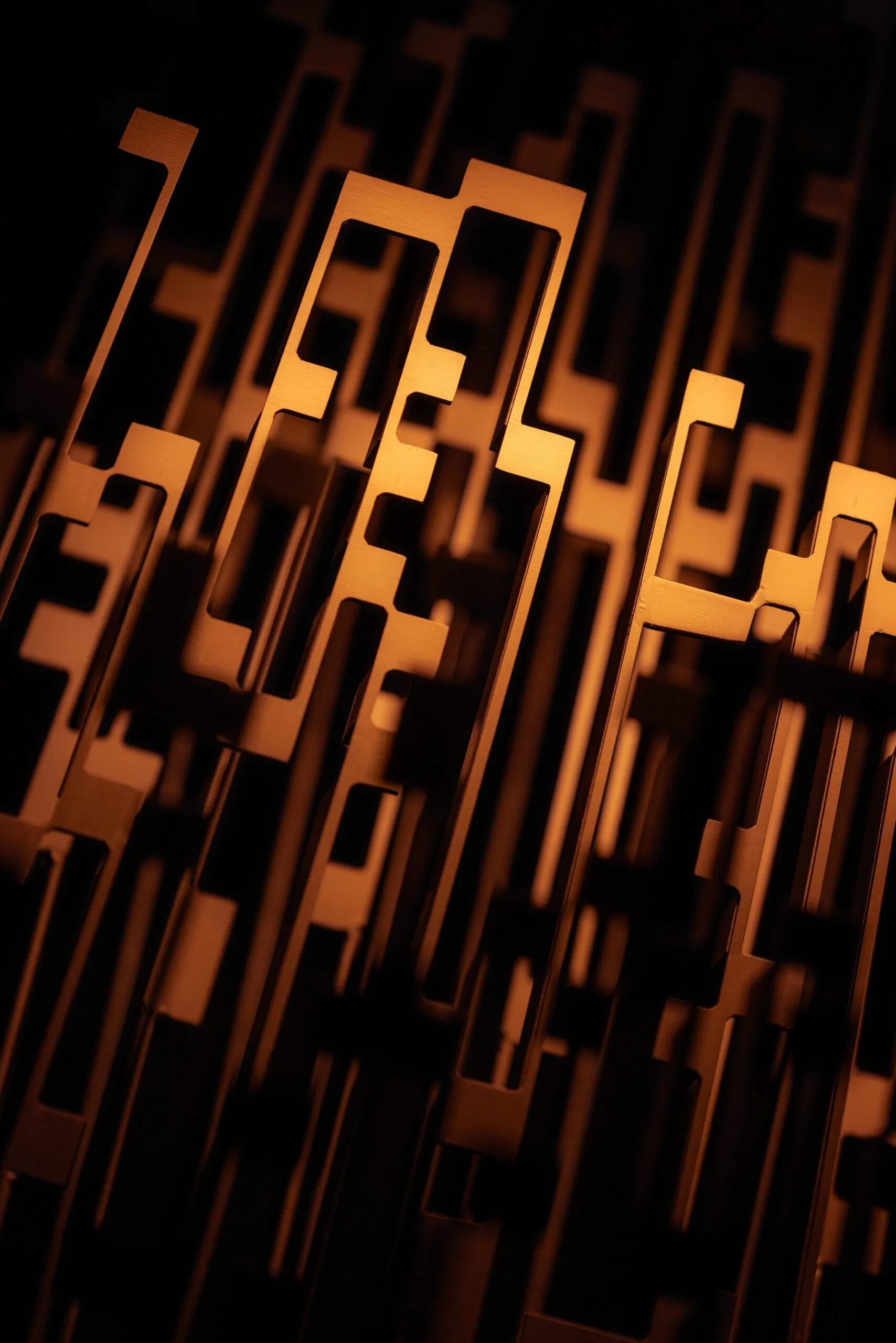Next month, for the first time in its history, the storied Musée d’Orsay in Paris will showcase original artworks featuring blockchain technology.
Come February, however, the museum—a majestic 19th century railway station on the Seine’s Left Bank, lined with the masterworks of Monet, Manet, and van Gogh—will feature nary a stray CryptoPunk nor animated penguin. In fact, its new blockchain-backed art won’t utilize a single screen.
“I don’t think it would be very relevant if I put 30 screens in a museum like this,” Sébastian Devaud, aka Agoria, the artist behind the Orsay’s upcoming high tech exhibition, “Le Code d’Orsay,” told Decrypt. “My question for the whole year I was working on this was: How can we make the digital sensible? How can we make the digital not opposed to the physical?”
Devaud’s answer to those questions comes in the form of two artworks that will display at the Orsay from February 13 to March 10. Both pieces, while relying on different technologies, constitute what Devaud—a French DJ, electronic music producer, and experimental artist—dubs “biological generative art.”

The first piece, titled “Sigma Lumina,” which was created by Devaud in collaboration with the artist Johan Lescure, involves an elaborate steel sculpture that—when hit by the perfect alignment of light from above, at various intervals—casts a shadow in the form of a QR code. Museum attendees who spot and scan this code with their smartphones will be taken to a site, powered by the Tezos blockchain, on which they will find swirls of colorful art inspired by various works on display at the Orsay from Impressionist masters including Caillebotte, Degas, and Renoir.
Patrons will then be encouraged by an on-hand docent to blow into their phones. Doing so will transform these images into unique artworks, mintable on Tezos, that guests can own forever.
“The classic audience of the museum has this feeling that digital art is monkeys or JPEGs or whatever,” Devaud said. “Now they will say, ‘I have a piece of art from the Musée d’Orsay. I blew into my phone, I made it, and now it’s mine!’”
“Think of them in that room, blowing into their phones,” he added, laughing. “I love this.”
The second piece has nothing to do with blockchain technology, but everything to do with Devaud’s novel concept of biological generative art. The artist, in collaboration with four of France’s top genome researchers and biophysicists, and with the aid of a bioreactor, developed a specialized yeast culture that will—in its unique patterns and movements—represent five phases in the life of French painter Gustave Courbet.

The project will specifically interpret these phases of the painter’s life by interlaying microorganisms with a version of Courbet’s iconic 1855 work, “The Painter’s Studio,” in which Courbet reflected on the preceding seven years of his life. That painting, and Devaud’s biochemical reinterpretation of it, will hang at the Orsay side by side.
If blockchain and yeast experimentations sound a little out there for one of the world’s most revered fine art institutions, you won’t hear so from the Orsay’s leadership.
In September, the museum announced a year-long partnership with the Tezos Foundation to bring blockchain-backed artwork and artists into conversation with its collections. The first stage of that collaboration saw the Orsay debut multiple on-chain digital souvenirs that paired with the museum’s latest van Gogh exhibition, which opened in October. The next stage, as represented by “Le Code d’Orsay,” is showcasing on-chain art that doesn’t supplement other work, but is a draw in itself.
Pierre-Emmanuel Lecerf, the Orsay’s general administrator, sees a direct line of continuity between the trailblazing Impressionists that anchor the museum’s ethos, and the disruption of contemporary artists like Devaud.
The late 19th century was also a time of great technological and scientific upheaval, Lecerf says. Those factors were inextricably linked to the work of Impressionists, who upended centuries of convention with their radical reinterpretation of light and perspective.
“It’s deeply rooted in Web3,” Lecerf told Decrypt of the upcoming "Le Code d’Orsay" exhibition. “But it also resonates with these [longstanding] questions about the link between art and technology, and art and science.”

Lecerf says that Devaud’s pieces are the perfect entry point for the Orsay into Web3 art, given that interconnectivity.
“We didn't want to engage in a dialogue with Web3 just because it was hot,” Lecerf said. “Otherwise we would have done that in 2021, like other museums did—they participated in auctions of [on-chain] works and they benefited from it financially.”
“We never selected this highly speculative approach,” he continued. “What matters to us is… really a question of artistic fit.”
On February 23, during NFT Paris, Devaud will host a DJ set at the Musée d’Orsay— unsurprisingly, also a first for the institution—celebrating the premiere of Le Code d’Orsay.
That event will likely even further underscore the curious synergy of artistic rebellion with a museum known to many as the highlight of their grandparents’ trip to France.
But to Devaud, there’s no tension to be found in the concept of high-decibel electro beats and colorful lasers bouncing off some of the world’s most precious sculptures and paintings.
“I spent many nights alone in that museum, navigating all the incredibly legendary paintings and sculptures, and it felt so modern,” Devaud said. “Modernity, in my opinion, means that when you see it, it looks like it could have been done in the future, that it's really fresh.”
“These pieces were not in the trend of the moment; there was controversy about many of those artists at the time they worked,” he continued. “The visionary artists are the modern ones.”
Edited by Andrew Hayward

